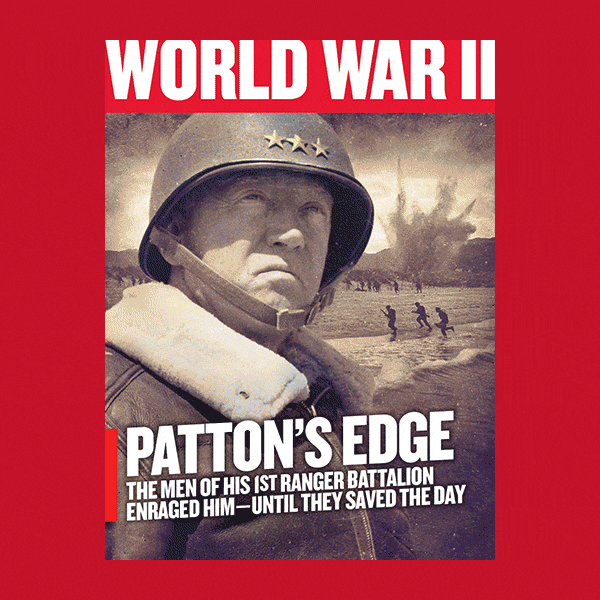The shadows were lengthening at England’s North Witham airfield on June 5, 1944, when an officer stepped down from a C-47 transport plane, a small case attached to his right wrist. Armed guards, who usually patrolled the airfield that lay 100 miles north of London, accompanied the officer into a building where he was met by 28-year-old Captain Frank Lillyman, a slightly-built New Yorker who often could be found with a wry smile and impish glint in his eye. Now he was all business.
The officer opened the case, pulled out a message, and handed it to Lillyman. Since December 1943 Lillyman had commanded the 101st Airborne Division’s pathfinders—paratroopers who jump in before the main assault force to mark drop zones. At last, after weeks of growing tension and restless anticipation, the top-secret orders from the division commander, Major General Maxwell D. Taylor, had arrived: D-Day was on. The drop was a go. “Get the men ready,” Lillyman told a sergeant; then the message was burned.
Out of nowhere, it seemed, there appeared grinning Red Cross girls with hot coffee, a gaggle of cooing press photographers, a Signal Corps cameraman using rare color film, and several members of the 101st Airborne’s top brass, all present to witness the departure of the very first Americans to fight on D-Day—the spearhead of the Allied invasion.
There was playacting for the cameras, followed by nonchalant waves and friendly punches to buddies’ shoulders. A paratrooper did circles before a plane on a tiny motorized bike to much laughter. Then a medic gave Lillyman’s chain-smoking pathfinders “puke” pills in small cardboard boxes to combat airsickness, and bags in which to vomit. Some threw the pills away, not trusting them, wanting to be sharp, clearheaded, the moment they touched the ground in France.
With a guttural roar of engines, the C-47s that would carry them to the drop zones started warming up and the horsing around came to an end. Lillyman’s men—some carrying their body weight in equipment—clambered or were helped aboard the twin-propped aircraft, hastily daubed with black-and-white invasion stripes to distinguish them from enemy aircraft. Brown masking paper still covered some areas of the fuselage to protect them from the rush paint job.
Captain Lillyman, weighing in at all of 140 pounds, took his place beside the door of one of the C-47s, his customary stogie between his lips, wearing white leather gloves and a Tommy gun strapped to his left leg just above the M-3 trench knife, useful for slitting throats, attached to his shin. He would be the first American to leap into the darkness over Normandy—if they made it to the drop zone. None of the pathfinder aircraft were armed, none had any protection against antiaircraft fire, and there would be no escort to defend against enemy fighters. Once airborne, Lillyman and his men would be all on their own.
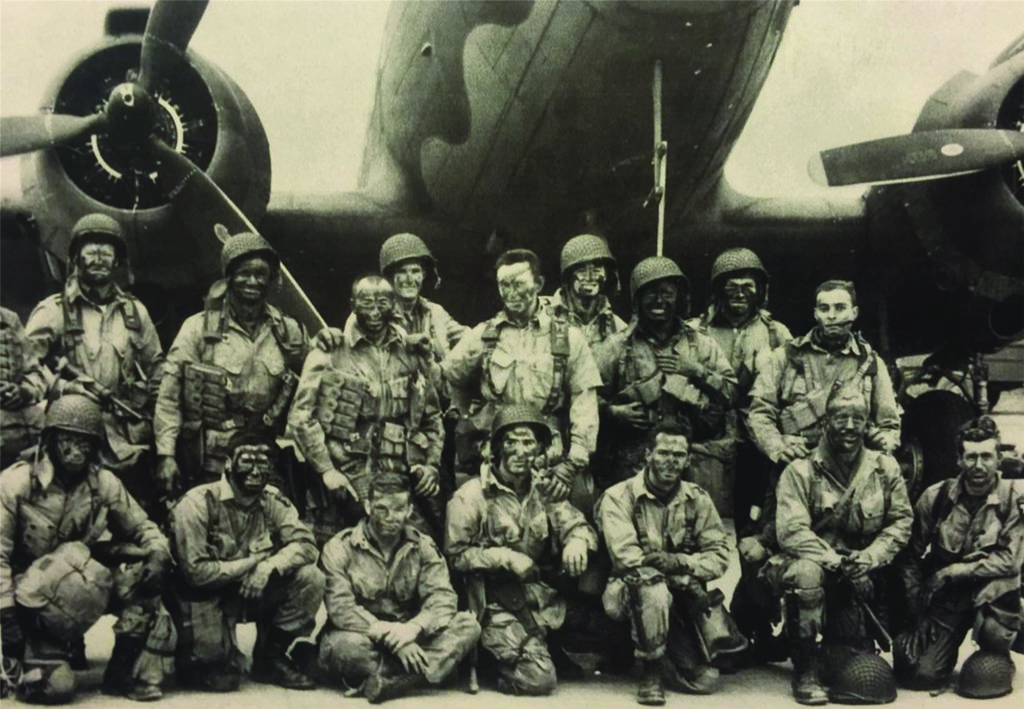
IN THE PLANE’S COCKPIT was lead pilot Lieutenant Colonel Joel Crouch, known to all as “Colonel Joe.” The commander of the IX Troop Carrier Command’s pathfinder unit, Crouch, 33, was considered the best in his business, having previously been the lead pathfinder pilot for the invasion of Sicily in July 1943 and of mainland Italy a few months later. To his right was copilot Captain Vito Pedone, 22, who, like Crouch, had plenty of game. Behind them was navigator Captain William Culp, 25; one report called him “a square-jawed, thoughtful sort of man.”
It was 9:50 p.m. and the light was fading fast as Crouch’s C-47 lifted into the air, carrying the 18 men who would be the first Americans to drop into enemy-occupied France. In radio silence and bad weather, Crouch would lead two other planes in his flight in a “V” formation at low level. More flights, carrying 200 additional pathfinders, would follow. They would then set up radar and lights to guide a sky-train delivering an entire division of airborne troops. Any failure would jeopardize the entire invasion.
Exactly four minutes after takeoff, Crouch reported to ground control that he was on his way to France, making for the English Channel at 3,000 feet. A former pilot for United Air Lines who’d mostly flown along the West Coast before the war, he would soon be followed by scores of other planes carrying 6,600 men from the soon-to-become-legendary “Screaming Eagles.” He was now what one reporter called “the spearhead of the spearhead of the spearhead” of the D-Day invasion.
It was around 11:30 p.m. when Crouch saw the English Channel below—the cue, copilot Pedone recalled, to turn off the plane’s lights; they would stay dark until the pathfinders had hit the drop zones and the C-47 was headed back over England. It was a sobering moment. Crouch knew that he and three-quarters of his fellow flyers could be killed or wounded over the next 60 minutes. That had been the prediction in planning.
The C-47 swooped toward the gray waves and leveled out in radio silence below 100 feet, engines throbbing as it flew undetected toward France, soon passing above a vast armada, flying so low it seemed to sailors below that it might actually clip the masts of some ships. Crouch’s only guides were two Royal Navy boats, positioned at prearranged spots in the Channel, shining green lights. After passing the second boat, Crouch turned his C-47 90 degrees to the left. The two other planes in his flight followed. France was now 60 miles away. Crouch spotted German searchlights stabbing the stormy skies from two of the Channel Islands, the sole British territory occupied, since 1940, by the Germans.
In the cargo hold behind Crouch, hunched up on folding seats, his passengers began singing, belting out drinking songs. The pathfinders sounded like they were headed to London for a wild weekend with some saucy “Piccadilly commandos,” not toward enemy territory. Bound to be among the loudest was their commanding officer—the fast-talking Captain Lillyman, who hailed from Skaneateles in upstate New York. Once described by a superior as an “arrogant smart-ass,” he was standing with a black cigar still clenched between his teeth in an open door at the rear of the shuddering plane. The cigar was, in his words, a “pet superstition.” Uncle Sam had thoughtfully issued him 12 a week, and he’d never jumped without one stuck between his lips.
Tonight, this night of nights, Lillyman and the other pathfinders aboard the C-47 would mark out Drop Zone A—one of six landing zones for American airborne troops—inland of Utah Beach. Seven amber lights, placed in a “T” shape and turned on when Lillyman gave the order, would indicate to later waves of pilots when to turn on the green jump light, in this case for arriving paratroopers of the 502nd Parachute Infantry Regiment. Others in Lillyman’s group carried Eureka radar sets, which would send out signals to be picked up by the aircraft bringing in the main body of 101st Airborne.
Lillyman was in pain, having torn leg ligaments in a training jump four days earlier. Not wanting to miss D-Day, he’d tried his best to hide the injury. He looked down again at the whitecapped waves of the English Channel. A coastline appeared, and then the plane entered thick clouds.
They were over enemy territory.
Before long, Lillyman was staring at a patchwork of Norman fields, hedgerows, and old stone farm buildings bathed in the moonlight. Then Crouch began to follow a narrow road Lillyman could also see below, heading for Drop Zone A.
A red light flashed on.
Lillyman stood up straight and ordered his men to get to their feet. To shed weight, many had dispensed with their reserve chutes, leaving them stuffed under their seats.
“Snap up!” called Lillyman.
In the cockpit, navigator Culp told Crouch that they were close to the village of Saint-Germain-de-Varreville. Dark fields rushed past below. Crouch pulled back on the throttle, slowing the plane, cutting prop blast.
A green light flashed a few seconds later.
“Let’s go!” shouted Lillyman at the open door.
He then stepped out into the prop blast, followed by 17 others. Crouch noted the time as he dived low, heading back toward the English Channel. It was 12:15 on the morning of June 6, 1944—the most important day of the 20th century.
The first Americans had arrived in France.
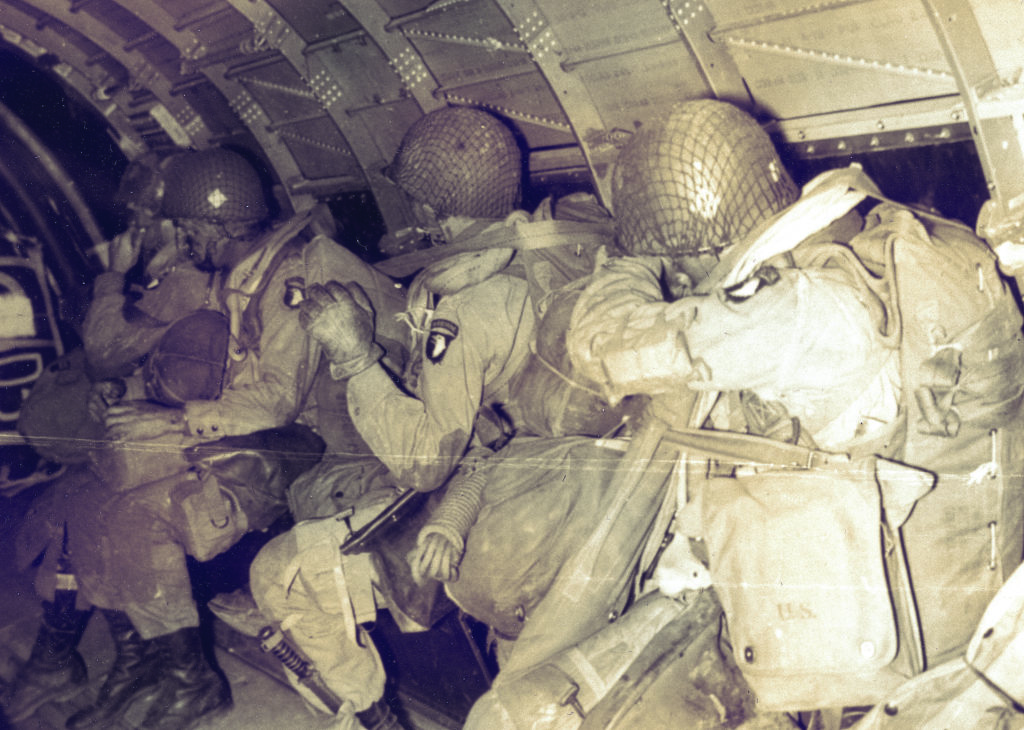
UNLIT CIGAR BETWEEN HIS LIPS, Lillyman drifted down from 450 feet at 16 feet per second, trying to spot a clearing as the earth rushed up to meet him. He pulled on his forward risers and a few seconds later touched down in a small field. After freeing himself of his parachute, Lillyman took off across the field. He thought he could see something moving in the shadows cast in the moonlight by tall poplar trees. Germans? He loaded a clip in his Tommy gun. There were shapes moving. Friend or foe? He used his “cricket,” a small metal signaling clacker.
Click, clack….
Click, clack….
He was about to open fire when he heard one of the shapes make a sound—a loud “moo.” The shapes were cows, and he laughed to himself and felt a little less nervous.
Click, clack.…
Click, clack….
Some men replied with their crickets, and within minutes Lillyman had connected with seven of his group. Silently they examined maps and scouted the immediate vicinity in pairs. Lillyman soon realized he had been dropped more than a mile north of where he should be, but there was no time to get to the planned position for setting up lights. They had fewer than 30 minutes before the main body of troops would arrive, so Lillyman decided to use the nearest suitable fields.
Machine-gun fire suddenly broke the silence and Lillyman took cover as Germans, hidden in a hedgerow, fired several more bursts. He sent two men to “convince these Krauts of the errors of their ways,” as he put it, and soon heard a grenade go off with a “whumf,” and then everything was “lovely and quiet.”
Lillyman could make out a church, less than 100 yards away, at the center of Saint-Germain-de-Varreville, and soon he and his men had gathered in its graveyard. The church steeple would be an excellent spot for a Eureka set.
A priest came to the heavy wooden door at the main entrance. He looked afraid. One of Lillyman’s men, a young lieutenant, could speak French.
“Bonsoir, padre,” he said. “You’ve just been liberated.”
The lieutenant explained what they were doing, and a Eureka set was soon in the steeple, as well as three others along a hedgerow near the church. The pathfinders laid out lights forming the “T” 200 yards to the east of the church, in a field beside a narrow lane. Then two men climbed a tree and put another Eureka set in the branches.
All they could do now was wait. But then Lillyman learned from a scout that there was a large farmhouse, seemingly occupied by Germans, close to a 20mm antiaircraft gun position that could wreak considerable havoc. “Two others and myself went to the house where we met a Frenchman smoking a pipe,” Lillyman remembered. “He was standing in the doorway. He jerked his thumb toward the stairs and said, ‘Boche.’ We caught one German, in a nice pair of white pajamas, in bed. We disposed of him and expropriated the bottle of champagne beside the bed.”
Lillyman made his way back to the church and waited anxiously for the sounds of engines. Time passed slowly, making for what he called the “longest minutes” of his life. At 12:40 a.m., he finally heard it—the steady drone of hundreds of planes to the north—and ordered his men to turn on the drop zone’s lights. “Those lights never looked so bright in training,” he recalled, “but that night they looked like searchlights. One light went out, and we had to rig an emergency connection. We were silhouetted against it for a few minutes.”
The first aircraft flew over the “T” that Lillyman’s men had placed on the ground. It was 12:57 a.m. The main body of American airborne troops had arrived.
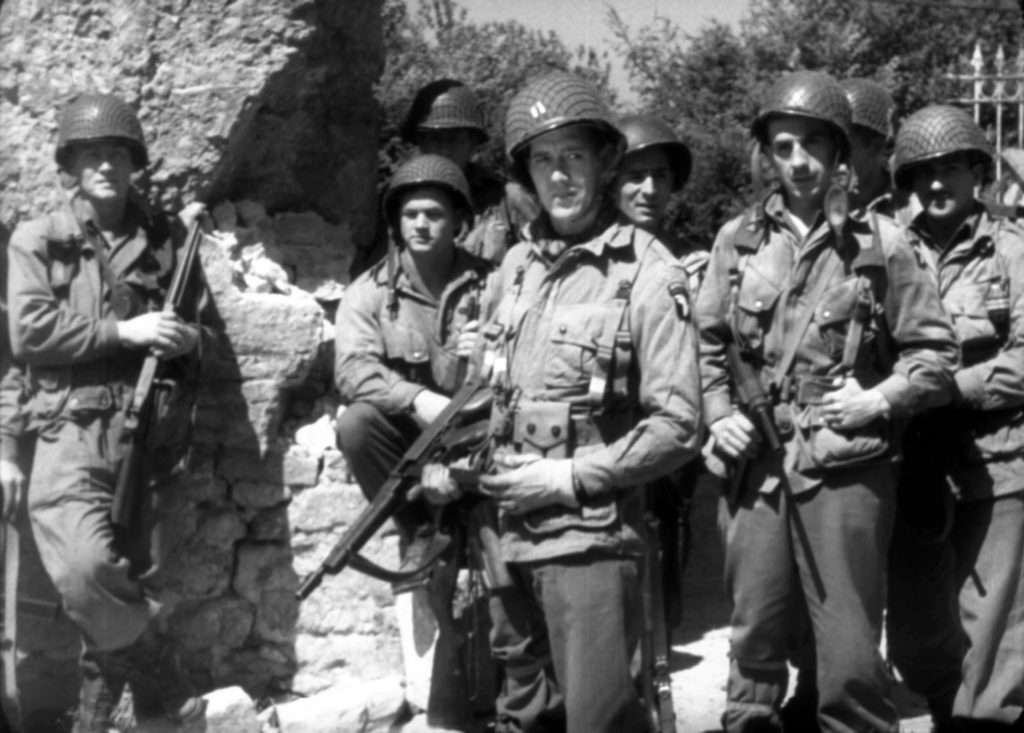
BY 2 A.M. CROUCH AND PEDONE had returned to England, crossing the Channel in darkness, the flame-damper on their C-47’s exhaust helping to conceal their path through the moonlit clouds. They had been ordered, according to one report, to provide a detailed account to D-Day commander in chief General Dwight D. “Ike” Eisenhower, who had wanted “a first-hand assessment.” Pedone later remembered: “We reported to Eisenhower and told him the pathfinders did their job and explained what we saw.”
The pathfinders had indeed done their job, but it could hardly be described as a smashing success. It would later emerge that less than a third of the pathfinders had landed on their drop zones. In some cases, pilots had panicked under heavy flak and dived too low and too fast and released their human cargo too soon.
The pathfinder operation had, however, been less chaotic than the main drops that followed. Dozens of men had landed in flooded fields and drowned. Thousands were now enduring a long, lonely night of confusion and sometimes terror, snapping their “crickets,” hearts thumping, wondering if the sudden rustle in a bush had been made by a comrade or a teenage Nazi pumped up on amphetamine with dagger drawn. Lillyman’s own 502nd Regiment had been scattered far and wide, some men landing with a sound, recalled one paratrooper, “like large ripe pumpkins being thrown down to burst.”
Among the marshes and hedgerows of Normandy, Ike’s paratroopers were displaying plenty of bravery and devotion to duty. But it would be days before the 101st Airborne Division, or their fellow paratroopers in the 82nd Airborne, gained any semblance of unit cohesion.
By the time the shadows were lengthening on June 6, the three 101st Airborne regiments had been in France for more than 18 hours and were in urgent need of resupply. As part of an operation called Keokuk to provide personnel, heavy equipment, and supplies to the 101st, tow-planes lifted 32 British Horsa gliders from an airfield southwest of London. It was up to Lillyman and his pathfinders to mark the gliders’ landing zone.
Near a village called Hiesville, south of that morning’s position and still inland of Utah Beach, Lillyman located a field that had been cleared of defensive obstacles and was large enough to fit the gliders. As he and his men positioned Eureka sets, lights, and pots exuding green smoke that would guide the Horsa pilots, heavily camouflaged German troops infiltrated into neighboring fields. At just before 9 p.m. the Horsa gliders crossed Utah Beach, cut loose from their tow-planes, and aimed for Lillyman’s landing zone.
The Germans opened fire as the gliders swooped in toward land. Some pilots panicked and crashed into trees. Lillyman was running toward a smashed glider to help men get out when a bullet hit his arm. Someone shouted his name, and he looked at his sleeve and saw blood flowing. Then he collapsed as a piece of mortar shrapnel sliced his face.
Operation Keokuk was a success, boosting the morale of the troops on the ground. But Lillyman wasn’t around to see that. A medic treated him, and he was taken to an aid station and, after that, evacuated to a hospital in England. His wounds were far from life- threatening, but for Captain Frank Lillyman, D-Day was finally over.
Lillyman, though, wasn’t prepared to wait on the wrong side of the English Channel. A few days later, the captain went absent without permission from the hospital, determined to rejoin his men in Normandy. He wrangled his way onto a supply ship on June 14 and reported for duty back in France. News footage of the 101st Airborne in Normandy showed an ever-cocky Lillyman, already feted by the American press as the first American to land in France on D-Day, surrounded by his fellow Screaming Eagles, Tommy gun in hand, nonchalantly answering questions.
The 101st commanding general, Maxwell Taylor, having just encountered savage German resistance at Carentan, was apparently far from pleased to see his wayward, now-famous pathfinder. According to one report he “waved the papers for promotion under Lillyman’s nose and then ripped them up.” A few weeks later Lillyman paid the price for going AWOL and was ordered to change units, moving to the 502nd Parachute Infantry Regiment’s 3rd Battalion. His days as a swashbuckling pathfinder were over.
The 3rd Battalion was the right unit for someone eager to see action. He and his fellow Screaming Eagles in the 502nd Parachute Infantry were in the thick of it at Operation Market Garden—the Allied operation that fall intended to shorten the war by dropping a large force across the lower Rhine in Holland—and again at the Battle of the Bulge. When supplies ran desperately low for the ill-equipped defenders at Bastogne, none other than Lieutenant Colonel Joel Crouch, seated beside Captain Vito Pedone, piloted the lead plane on December 23 carrying pathfinders to mark the drop zones for ammunition and medical supplies.
By the end of that bitterly cold January 1945, the Allies had regained lost ground, and the Battle of the Bulge came to an end. As spring beckoned and the winter snows began to melt, advanced Allied armored units rolled toward the banks of Germany’s swollen Rhine River, the last major obstacle on the road to Berlin. On March 24, Colonel Crouch was back at the controls of a C-47, this time as the lead pilot for the 17th Airborne Division during Operation Varsity, an Allied assault across the Rhine—the largest airborne operation in history carried out in one place on one day.
Crouch would go on to enjoy a long and successful postwar career in the air, dying in Hawaii in 1997 at age 86.
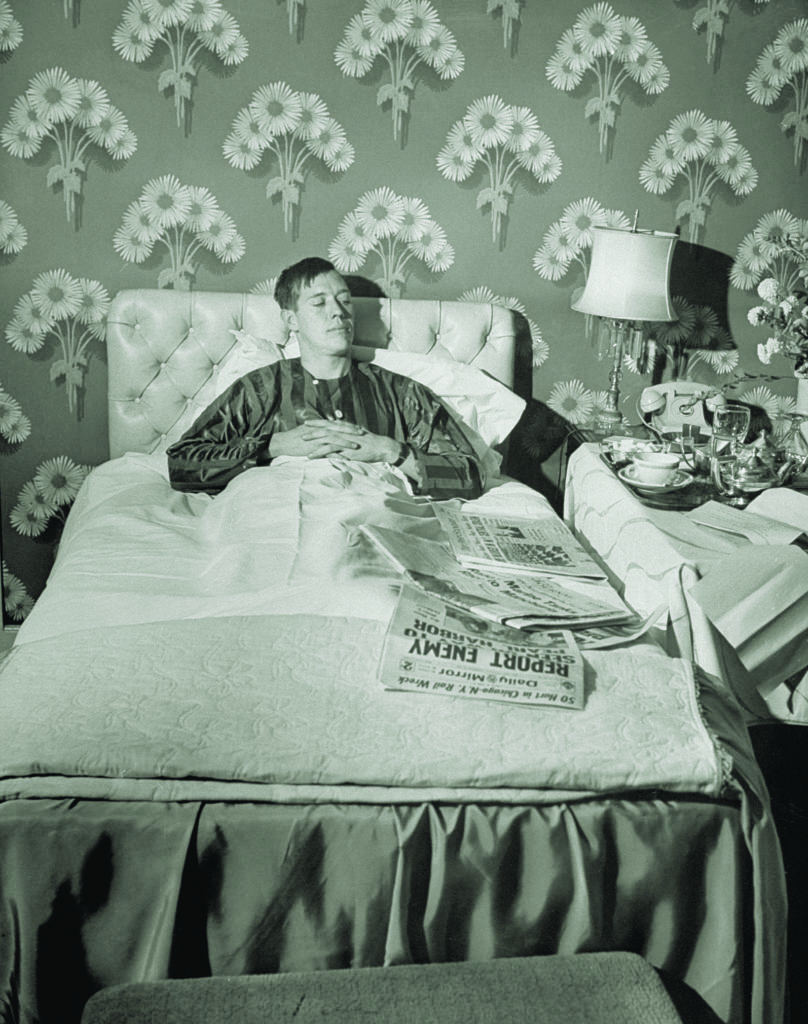
CAPTAIN FRANK LILLYMAN also survived the war and, in true Lillyman fashion, devised a headline-worthy homecoming. When not in combat, he had killed time scribbling letters, sketching, and fantasizing about a dream vacation he would take with his wife and young daughter Susan. After Lillyman returned to Skaneateles in the fall of 1945, he had a few drinks one night and wrote a letter to the Hotel Pennsylvania in New York City after reading an advertisement promising special treatment for guests who were veterans.
“I’d like a suite that will face east,” jotted Lillyman, “and English-made tea that will be served to me in bed…. For breakfast, a fried egg with yolk pink and the white firm, coffee brewed in the room so I can smell it cooking…. No military title…“Mister” will be music to my ears….”
Lillyman also wanted a “grey-haired motherly maid” to look after his daughter while he ate lobster à la Newberg and filet mignon.
“Can you do it?” he challenged.
They sure could. A few weeks later, in November 1945, a concierge greeted Lillyman and his wife and Susan, then four, and assured them “everything was set.” Lillyman had turned up wearing his 12 wartime decorations—including the Distinguished Service Cross—and was soon enjoying a five-room suite, complete with a sideboard full of booze and a sunken bathtub. He was even photographed by the press lying in bed with a cooked breakfast, feted by Life magazine as the cheeky combat veteran cocky enough to ask for and receive the perfect homecoming.
Lillyman would stay in the army, retiring in 1968 as a lieutenant colonel. He died of a stroke in 1971 at Walter Reed Hospital at age 55 and was remembered in a New York Times obituary as a “dreamer” who had been “much honored as the first American paratrooper to drop behind German lines during the Normandy invasion in WWII.” ✯


